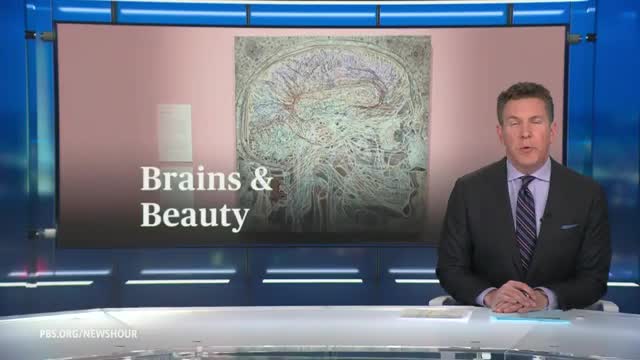Art and Neuroscience Unite in Groundbreaking Exhibit
This article was created by AI summarizing key points discussed. AI makes mistakes, so for full details and context, please refer to the video of the full meeting. Please report any errors so we can fix them. Report an error »

A new exhibit titled \"Brains and Beauty\" at the Scottsdale Museum of Contemporary Art is exploring the intricate relationship between art and neuroscience. The exhibit, which features a guided tour led by neuroscientist Anjan Chatterjee and museum educator Laura Hales, delves into how our brains process aesthetic experiences and the emotional responses they evoke.
Chatterjee, a prominent figure in the field of neuroaesthetics, emphasizes the importance of understanding the brain's reaction to beauty, stating that aesthetic experiences are fundamental to human existence. The exhibit introduces the concept of the \"aesthetic triad,\" which consists of sensory motor engagement, emotional valuation, and knowledge meaning. This framework aims to provide visitors with tools to enhance their appreciation of art by activating these three components simultaneously.
Hales, who curated the exhibit alongside Chatterjee, notes that the intersection of art education and neuroscience reveals shared inquiries about what draws individuals to specific artworks. The exhibit showcases a range of pieces, from those that are conventionally pleasing to the eye to those that challenge traditional notions of beauty. For instance, Chris Rush's portrait invites viewers to reconsider their definitions of aesthetics, while Arizona-based artist Monica Ayesa Martinez's painting, \"Thought Patterns,\" offers a more accessible representation of the brain.
Chatterjee's research extends beyond the art world, addressing societal implications of beauty standards. He highlights the \"beauty is good\" stereotype, which suggests that attractive individuals often receive preferential treatment in various aspects of life, including employment and legal consequences. This phenomenon raises critical questions about the conflation of aesthetic and moral values.
Ultimately, the \"Brains and Beauty\" exhibit aims to encourage visitors to engage with art on a deeper level, fostering self-discovery and reflection. By challenging viewers to consider their emotional responses and the meanings behind artworks, the exhibit positions art as a powerful vehicle for personal growth and understanding.
Chatterjee, a prominent figure in the field of neuroaesthetics, emphasizes the importance of understanding the brain's reaction to beauty, stating that aesthetic experiences are fundamental to human existence. The exhibit introduces the concept of the \"aesthetic triad,\" which consists of sensory motor engagement, emotional valuation, and knowledge meaning. This framework aims to provide visitors with tools to enhance their appreciation of art by activating these three components simultaneously.
Hales, who curated the exhibit alongside Chatterjee, notes that the intersection of art education and neuroscience reveals shared inquiries about what draws individuals to specific artworks. The exhibit showcases a range of pieces, from those that are conventionally pleasing to the eye to those that challenge traditional notions of beauty. For instance, Chris Rush's portrait invites viewers to reconsider their definitions of aesthetics, while Arizona-based artist Monica Ayesa Martinez's painting, \"Thought Patterns,\" offers a more accessible representation of the brain.
Chatterjee's research extends beyond the art world, addressing societal implications of beauty standards. He highlights the \"beauty is good\" stereotype, which suggests that attractive individuals often receive preferential treatment in various aspects of life, including employment and legal consequences. This phenomenon raises critical questions about the conflation of aesthetic and moral values.
Ultimately, the \"Brains and Beauty\" exhibit aims to encourage visitors to engage with art on a deeper level, fostering self-discovery and reflection. By challenging viewers to consider their emotional responses and the meanings behind artworks, the exhibit positions art as a powerful vehicle for personal growth and understanding.
View full meeting
This article is based on a recent meeting—watch the full video and explore the complete transcript for deeper insights into the discussion.
View full meeting